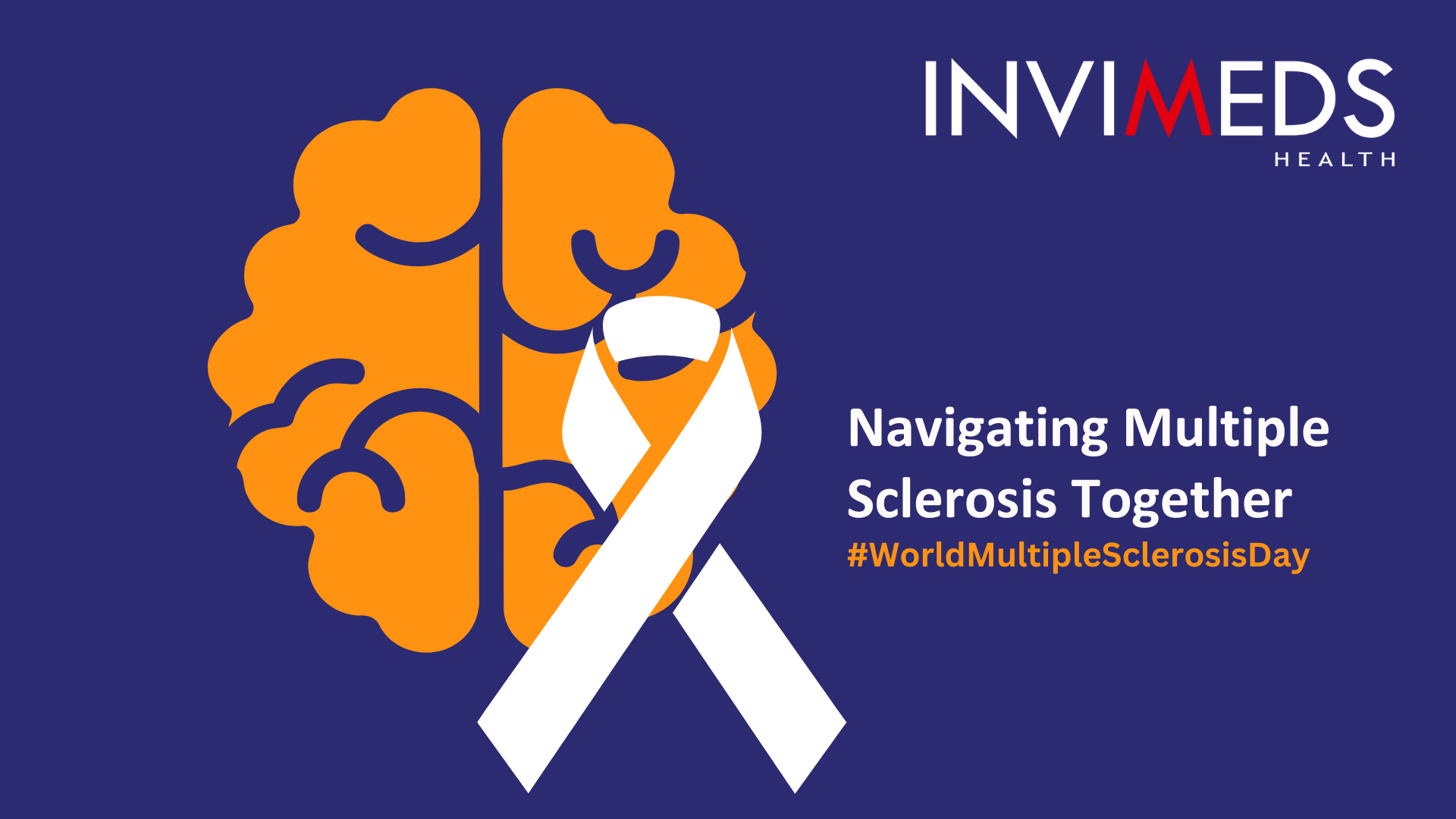Introduction
World Multiple Sclerosis Day occurs annually on May 30th, uniting communities worldwide to acknowledge the impact of multiple sclerosis (MS) and advocate for acceptance, support, and inclusion of those living with this chronic autoimmune disorder. It’s a pivotal occasion for increasing awareness, sharing narratives, and advocating for improved diagnosis, treatment, and research into MS.
Navigating Multiple Sclerosis together
The theme of World MS Day 2024-2025 is the diagnosis, with the campaign name ‘My Multiple Sclerosis Diagnosis’ and the slogan ‘Navigating Multiple Sclerosis Together’.
The campaign prioritizes early diagnosis for individuals with multiple sclerosis, shedding light on global diagnosis barriers while sharing real stories and data to raise awareness. It also targets enhancing MS education for healthcare professionals, advancing research, and building supportive communities and systems for those living with MS.
Understanding Multiple Sclerosis
Multiple sclerosis is an autoimmune condition affecting the central nervous system, encompassing the brain and spinal cord. In MS, the immune system erroneously attacks the myelin sheath, the protective covering surrounding nerve fibers, disrupting communication between the brain and the body. This disruption can lead to a myriad of symptoms and potential disabilities.
Global Prevalence and Inheritance of Multiple Sclerosis
Multiple sclerosis (MS) affects approximately 2.8 million individuals globally, with an annual incidence rate of 2.1 per 100,000 population across 75 reporting nations. On average, MS is diagnosed around the age of 32, and females are more susceptible than males.
While MS is not directly inherited, genetic factors can influence susceptibility. For instance, if one identical twin has MS, the other twin has a 30% chance of developing the disease, with lower risks for non-identical twins and other family members.
Multiple Sclerosis Statistics Worldwide vs. India
According to the Atlas of MS, global prevalence has risen since 2013. In India, limited studies make the exact prevalence unclear, but estimates range from 0.22 to 0.33 per 100,000 people, significantly lower than in Western countries.
Types of Multiple Sclerosis (MS):
- Relapsing-Remitting MS (RRMS):
- This is the most prevalent form, affecting about 85% of people diagnosed with MS.
- It is characterized by clearly defined attacks (relapses) followed by partial or complete recovery (remissions) periods.
- Secondary-Progressive MS (SPMS):
- Many individuals with RRMS eventually transition to SPMS, which involves a steady progression of symptoms over time.
- Initially, people with SPMS may still experience relapses, but these usually do not fully remit.
- Primary-Progressive MS (PPMS):
- About 10% of people with MS are diagnosed with PPMS, which is marked by a steady worsening of symptoms from the beginning, without distinct relapses and remissions.
- Progressive-Relapsing MS (PRMS):
- This rare form of MS affects about 5% of individuals and involves a steady worsening of symptoms from the onset, accompanied by acute relapses with or without recovery.
Less common variants of MS include:
- Clinically Isolated Syndrome (CIS): A single episode of neurological symptoms that may or may not lead to a diagnosis of MS.
- Fulminate/Malignant/Marburg MS: A rapidly progressive and severe form of MS.
- Benign MS: A rare, milder form of RRMS with little or no disease progression over 15 years.
Understanding these different types of MS is crucial for guiding treatment decisions and providing insights into each individual’s likely disease course and prognosis.
Symptoms of Multiple Sclerosis
Multiple sclerosis can cause a wide range of symptoms, including
- Fatigue
- Cognitive impairment
- Vision problems
- Numbness
- Tingling
- Muscle spasms
- Balance issues
The symptoms can vary greatly among individuals and may occur in unpredictable patterns.
Causes of Multiple Sclerosis
The exact cause of multiple sclerosis is not fully understood, but it is believed to be a complex interaction between genetic and environmental factors. Some potential risk factors include viral infections, vitamin D deficiency, smoking, and geographic location.
Diagnosis of Multiple Sclerosis
Key points about the diagnosis of multiple sclerosis (MS) include:
- No Single Definitive Test:
MS diagnosis relies on a combination of symptoms, medical history, neurological exams, and tests since there’s no single definitive test.
- Ruling Out Other Conditions:
Other neurological conditions must be ruled out as MS symptoms can overlap with them.
- Neurological Examination:
A thorough neurological examination by a neurologist assesses various functions like vision, strength, coordination, and reflexes.
- Magnetic Resonance Imaging (MRI):
MRI scans detect characteristic brain and spinal cord lesions, aiding in MS diagnosis.
- Evoked Potential Tests:
These tests measure brain electrical activity in response to stimuli, helping identify nerve damage consistent with MS.
- Lumbar Puncture (Spinal Tap):
Analysis of cerebrospinal fluid obtained through a lumbar puncture offers evidence of inflammatory processes linked with MS.
- Blood Tests:
Blood tests are conducted to rule out other conditions with similar symptoms.
- Diagnosis Criteria:
Relapsing-remitting MS diagnosis requires at least two attacks spaced a month apart, along with evidence of central nervous system damage in more than one area.
- Diagnostic Challenges:
Diagnosis may be challenging in cases with atypical symptoms or progressive disease, necessitating further testing and monitoring.
In summary, diagnosing MS involves a comprehensive evaluation by a neurologist, including history, examination, and various tests, to confirm MS’s characteristic features while excluding other conditions.
Treatment of Multiple Sclerosis
While there is no cure for multiple sclerosis, various treatment options are available to manage symptoms and slow disease progression. These include disease-modifying therapies, corticosteroids, physical therapy, and rehabilitation. The treatment plan is tailored to the individual’s specific needs and the type of MS they have.
Significant Growth Projected for the Multiple Sclerosis Market by 2032
The multiple sclerosis (MS) market is poised for significant growth over the next 8-10 years. Key details include:
- In 2021, the global MS treatment market was valued at $24.8 billion, with projections to reach $30.55 billion by 2030, growing at a CAGR of 2.5% from 2022 to 2030.
- In 2023, the global MS market was valued at $26.37 billion, expected to grow to $32.93 billion by 2032, with a CAGR of 2.5% from 2024 to 2032.
- The global MS therapeutics market, valued at $30.03 billion in 2023, is projected to reach $35.67 billion by 2028, with a CAGR of 3.5% from 2023 to 2028.
- The MS drugs market is expected to grow from $21.16 billion in 2024 to $38.94 billion by 2032, at a CAGR of 7.9% from 2024 to 2032.
- The global MS market, valued at $21.04 billion in 2023, is projected to grow at a CAGR of 5.4%, reaching $33.57 billion by 2032.
Overall, the MS market is projected to reach $30-39 billion by 2032, driven by increasing prevalence, advancements in treatment, and rising awareness.
Conclusion
World Multiple Sclerosis Day serves as a powerful reminder of the challenges faced by those living with MS and the importance of raising awareness, promoting research, and fostering a supportive community. By working together, we can build a future where everyone affected by MS has access to timely diagnosis, effective treatment, and the support they need to live their best lives.
Written By
Aswini PriyaMedical Content Writer
Reviewed By
Dr. AnchalMedico Expert
Last Updated
30 May 2024 | 11:00 AM (IST)










